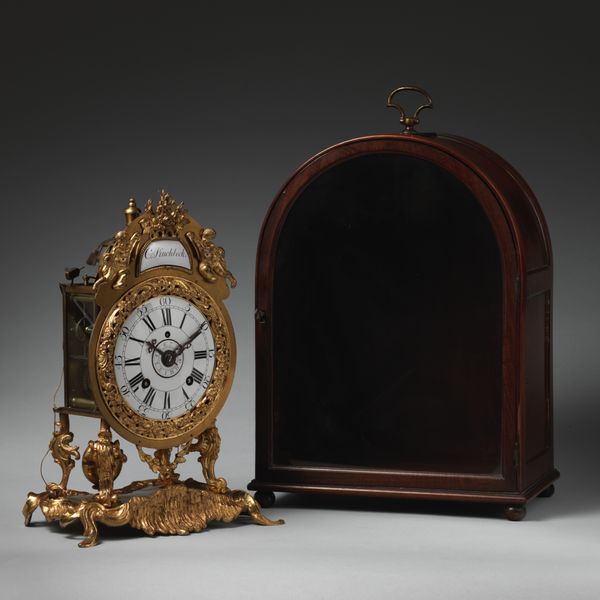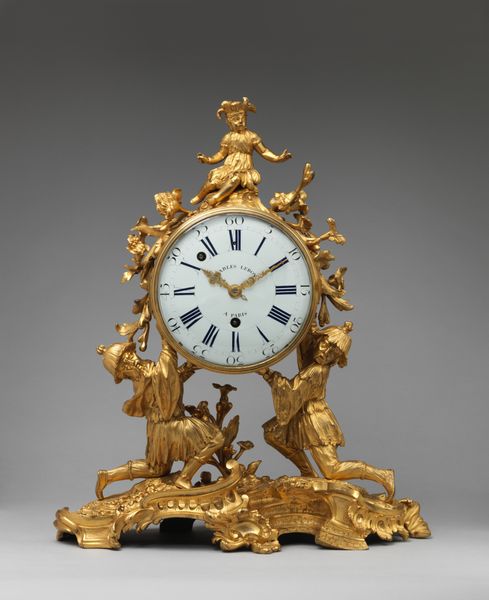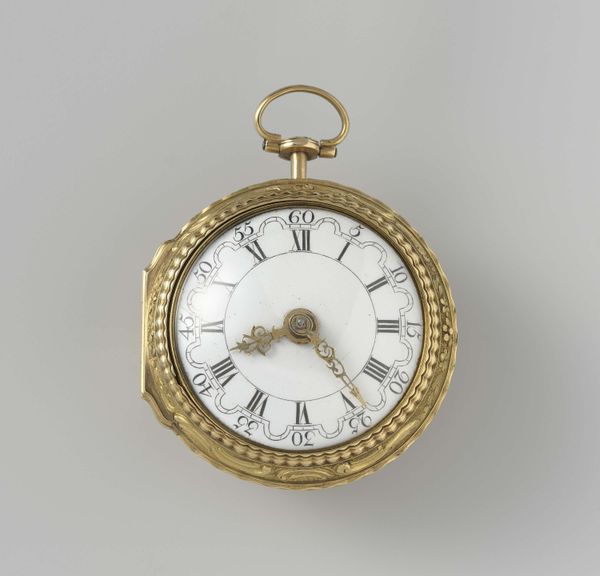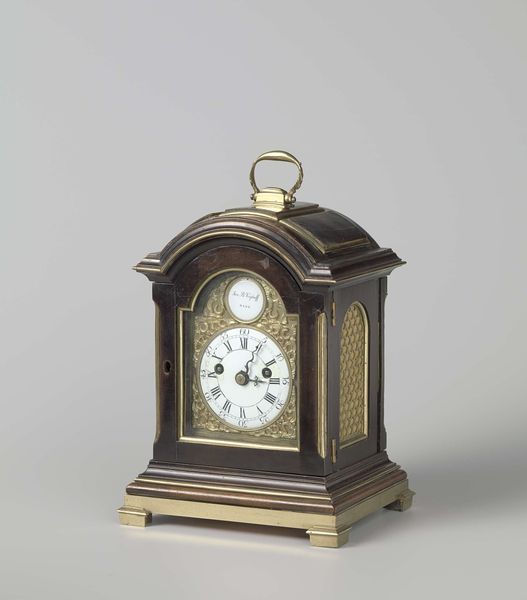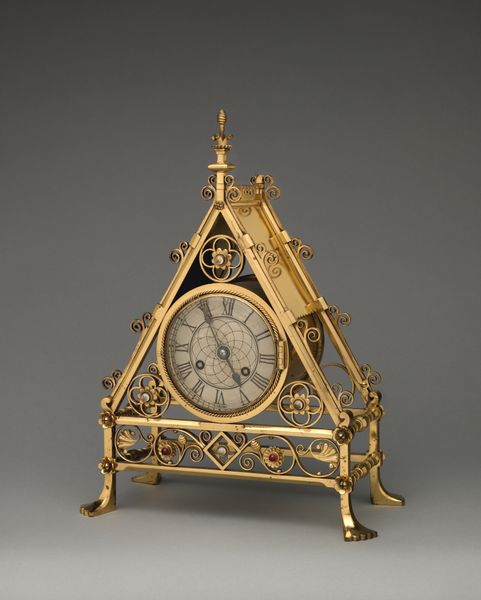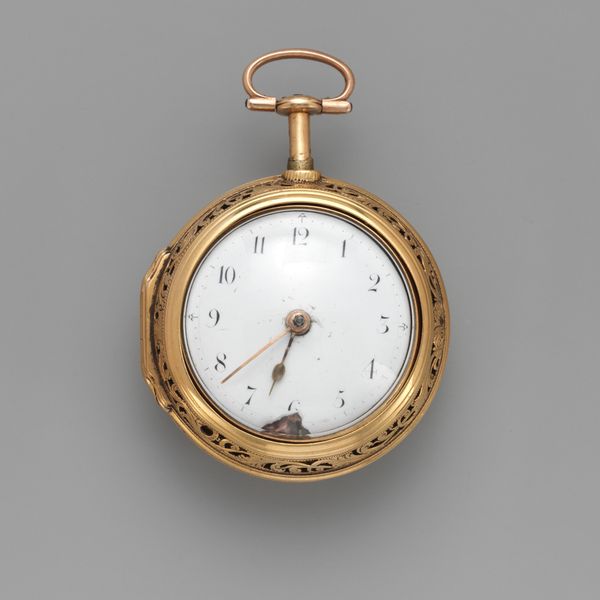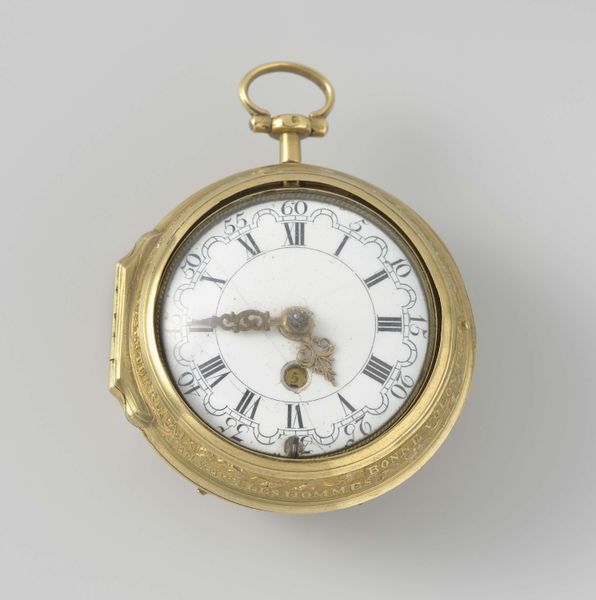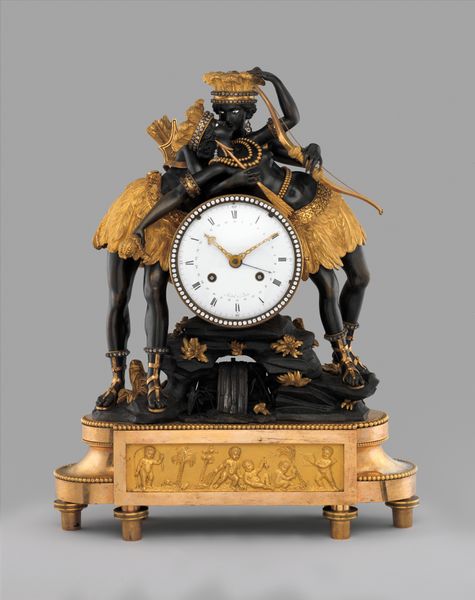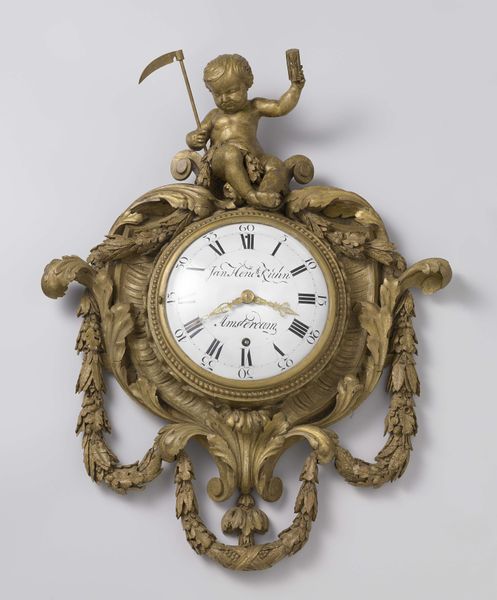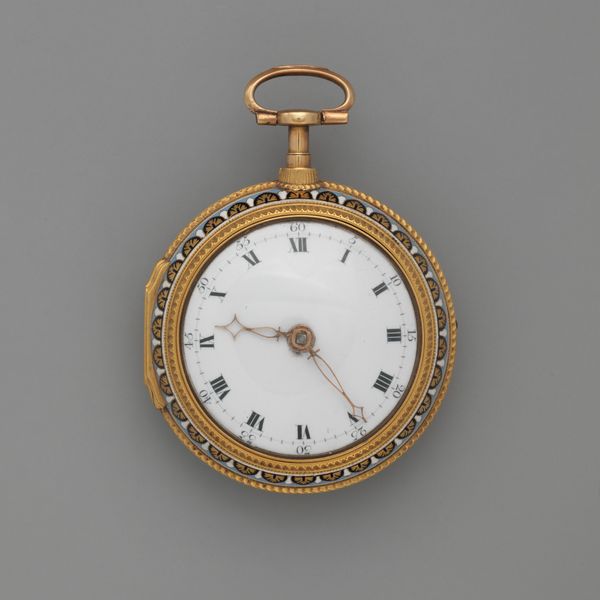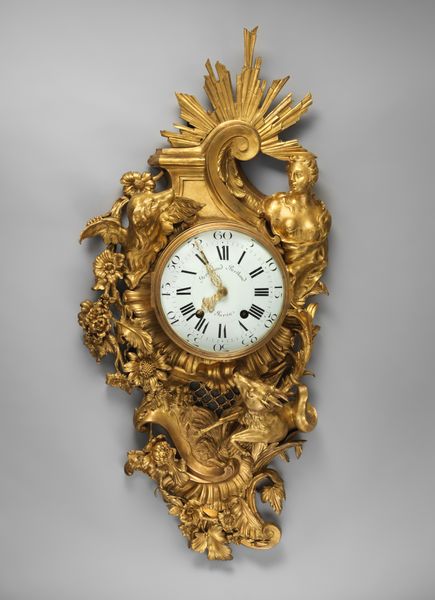
Clock with perpetual calendar and moon cycle inscribed in Arabic 1775 - 1799
0:00
0:00
Dimensions: confirmed: 8 × 8 1/16 × 2 3/4 in. (20.3 × 20.5 × 7 cm)
Copyright: Public Domain
Curator: Here we have a remarkable clock made by Jean Antoine Lépine, sometime between 1775 and 1799. It includes a perpetual calendar and a depiction of the moon cycle inscribed in Arabic. Editor: It’s overwhelmingly gilded, isn’t it? The ornate foliage seems to engulf the clock faces. You get a sense of tremendous expense and craftsmanship, a real display piece. Curator: Indeed. Clocks of this period were status symbols. Lépine was a clockmaker of great repute. His pieces graced the courts of Europe, reflecting a cultural fascination with time, precision, and the exotic. Editor: Looking closer, you see how the metalwork isn't just ornamentation; it is structured in the service of timekeeping. The chasing of the gilded brass gives a weighty permanence. But, the fact that the inscription of the calendar is in Arabic points to more than mere craft. Curator: Exactly. The presence of Arabic script indicates an awareness and incorporation of other cultural traditions, perhaps made for a specific patron within the Ottoman Empire or another Arabic-speaking region. It underscores how European decorative arts often intersected with global trade and diplomatic networks. Editor: That intersection is palpable. You have got this almost baroque excess of material, this riot of gilded surfaces, combined with symbols reflecting scientific precision and another culture's visual language. Who made it, under what conditions? I would love to trace the extraction of the raw materials. Curator: Such investigation reveals how art objects are embedded in power structures and economic realities. Think about the guilds, the patronage system, the global trade in precious metals—all influenced what Lépine created, how he created it, and for whom. Editor: I am also left considering what a 'perpetual calendar' even means in the late 1700s! What assumptions does such a declaration contain about stability and control? It feels a little audacious when you consider it. Curator: It's a fascinating synthesis, really. This piece provides a microcosm of artistic patronage and cross-cultural exchanges that helped define the decorative arts. Editor: Definitely an interesting item of global exchange. Let’s just not forget to consider who was doing the exchanging—and at whose expense.
Comments
No comments
Be the first to comment and join the conversation on the ultimate creative platform.

